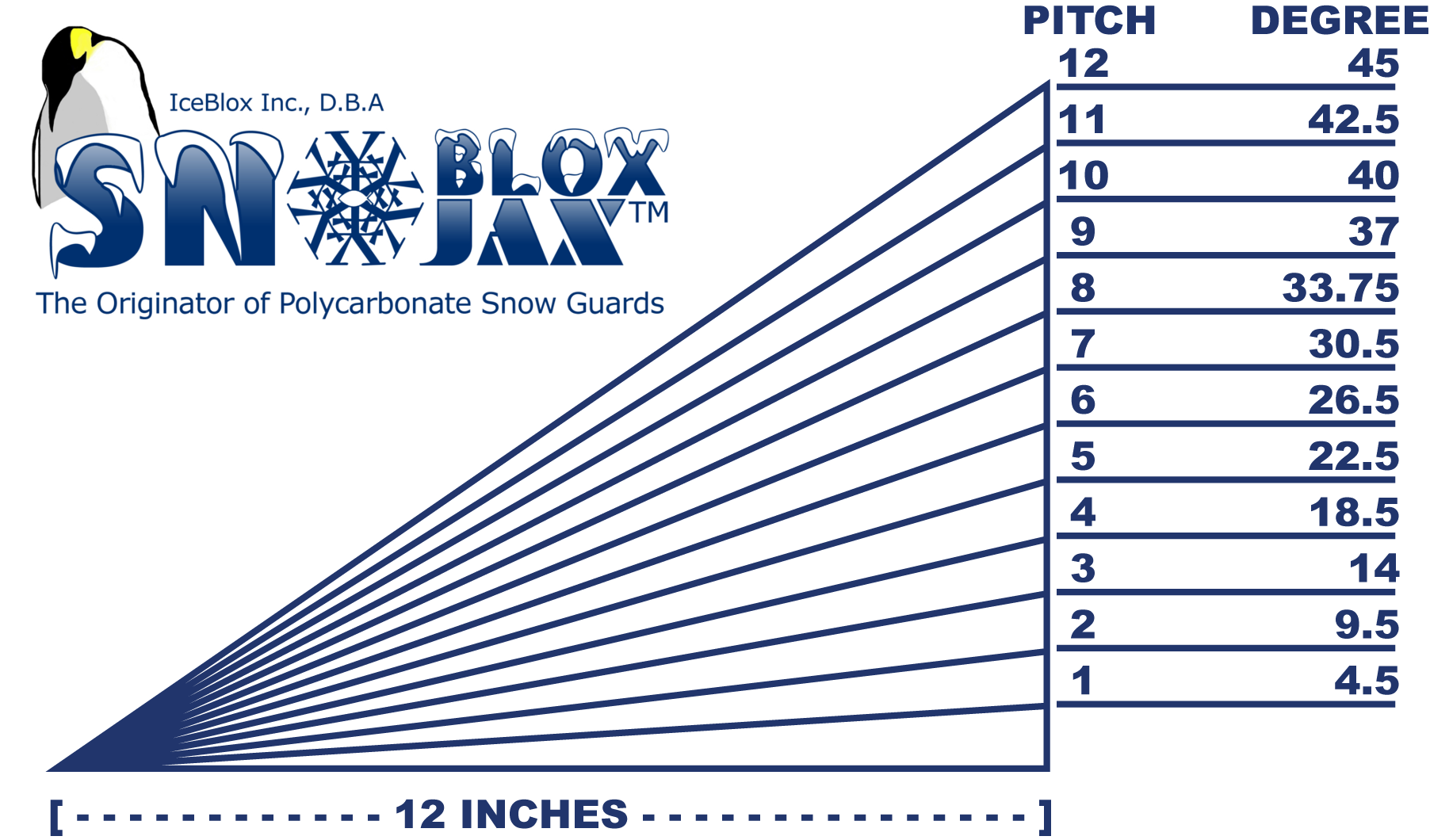Pitch Chart
Roof Pitch Chart
The pitch, or steepness of a roof, is a critical factor in determining the correct snow guards installation. Higher-pitched roofs are more prone to avalanches, and that changes the snow retention requirements.
We have created tools and resources to guide you with the design of your snow retention system. Our quick snow guard spacing guideline page will help you determine the right spacing for your snow guards.
We have also created this roof pitch chart as a resource for you:

Roof Pitch Frequently Asked Questions (FAQs)
Roof pitch refers to the slope or angle of a roof. It's important because it determines how effectively your roof sheds water and snow. A steeper pitch generally offers better drainage and can enhance the longevity of your roofing system. A steeper roof pitch will shed snow and ice more quickly than a shallow pitch, which can be dangerous without a snow retention system.
Roof pitch can is measure in degrees, as a ratio (e.g., 4:12), or as a percentage (e.g., 33%). These measurements indicate how steep or shallow the slope is. Roof pitch is a simple calculation of rise over run. For example, you would express a 4" rise and a 12" run as 4:12.
Steeper roof pitches tend to have a faster and more forceful snow slide when snow accumulates. Therefore, on steep-slope roofs, you often need more snow guards to distribute the load and prevent snow avalanches. Installers typically place the guards closer together on steep roofs. In contrast, they may be spaced further apart on shallower-sloped roofs. You can visit our spacing guidelines page for diagrams that help further illustrate this point.
If available, the first place to look would be on your building's plans. Architects typically list the roof pitch on the roof plan and the elevation drawings. If this is not an option and you are confident in accessing the roof, you have a few options for measuring this dimension. Many hardware stores sell a version of a digital or analog pitch/slope locator tool, which you can rest on the panel to determine the pitch. There are also cellphone apps that work this way. Last, you can use a measuring tape to determine the rise and run.
A roof with any pitch can still threaten people or property below. Shallow-pitch roofs tend to shed snow and ice differently in more of a creeping motion than a quick avalanche. You often see large chunks of snow and ice dangling over the edge before releasing. Your roof's snow guard layout will depend on several factors, including your local climate and ground snow load, roofing material, building codes, and roof design. It's advisable to consult with a roofing professional familiar with your area's specific conditions to determine whether snow guards are necessary for your roof.
